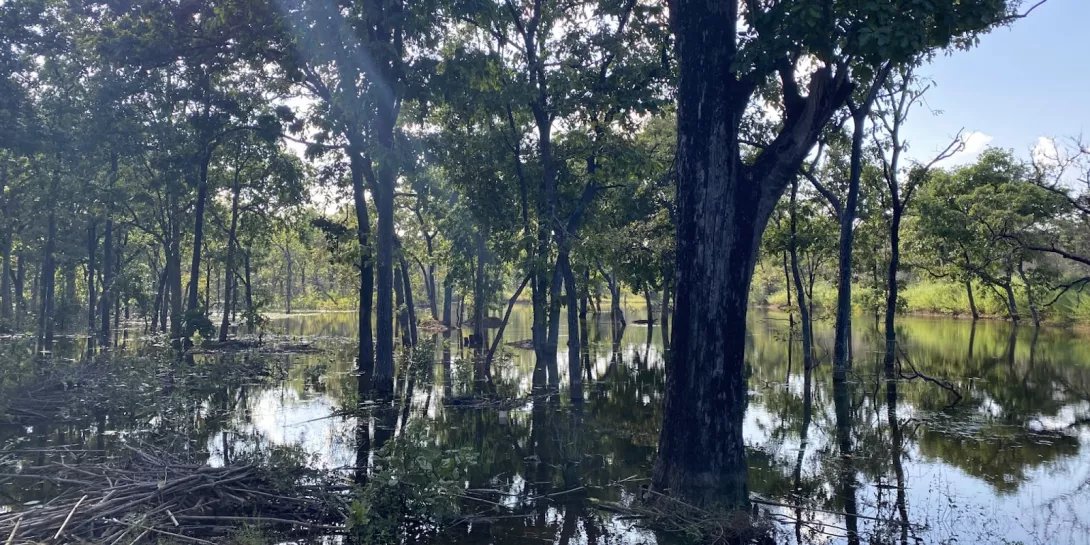
A little bit about me: I’m Rajay, a Nairobi-based Senior Design Researcher at YUX leading Human-Centered Design projects in education, health, and digital inclusion across East Africa. I’m a third-generation Kenyan of Indian descent, and I’ve grown up with a deep appreciation for nature and wildlife shaped by safaris across Kenya’s national parks. For those unfamiliar with the term, a safari is an expedition to observe wild animals in their natural habitat, usually in an open car. A recent trip to India gave me the chance to experience my first Indian safari—vastly different from Kenya’s open plains—and it left a lasting impression, inspiring this article.
After minutes of scanning, standing on the jeep as we followed our guide’s hushed instructions, I spotted it through the binoculars. A series of dark but faint stripes on an orange-hued coat, rising and falling with a slow, steady rhythm under the shadows of the dense thicket. As my view through the binoculars stabilized, the previously-resting creature stirred, raised its head and turned in our direction. Suddenly her face came into clear focus - the round, dark pupils framed by lightning-shaped black stripes radiating outwards - in a forest deep in central India over 5,000 kilometers from home, I was finally looking at the face of a tigress.
It struck me later how this experience differed from the East African safaris that I’ve had in the past. There, vast plains and open horizons can allow you to take in herds of buffalo, giraffes, and elephants all at once, spread out against a golden savanna. In India’s dense forests, the experience is more intimate and suspenseful. You move through narrow trails, flanked by thick undergrowth on either side, where every sighting feels like an unexpected discovery—a brief moment of clarity amidst the obscurity.
Reflecting on this, I began to see parallels with the work that many of us design researchers at YUX do. We often find ourselves knee-deep in qualitative data, sifting through quotes, stories and journeys of participants from (sometimes even over 100) in-depth interviews across multiple regions and countries, trying to make sense of it all and find those key ‘aha’ moments. Many times, it feels like navigating a dense forest, where clarity would only emerge after careful observation, decision-making, and patience.
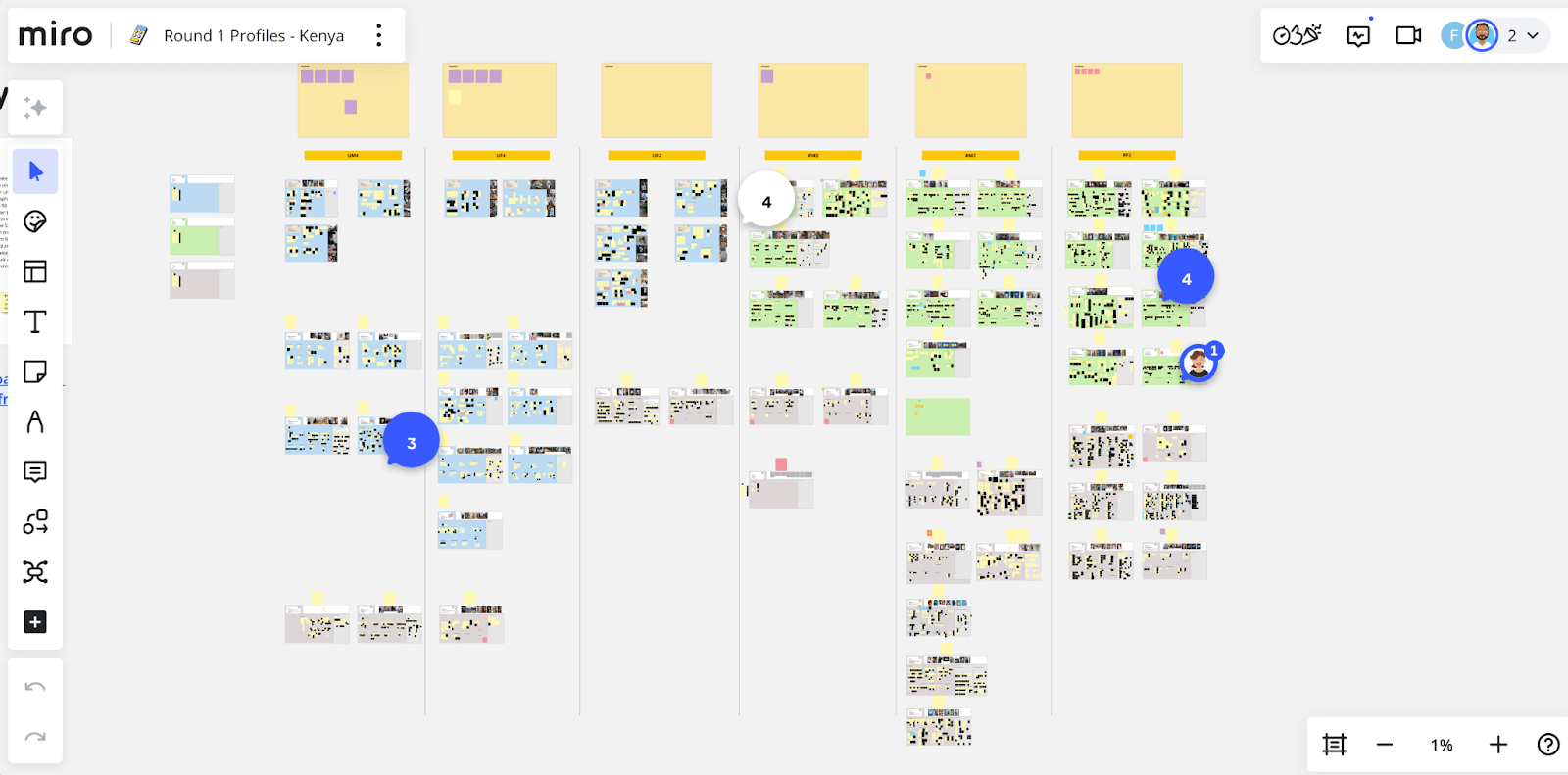
![]() Our ‘forest’ of data - visualizing all of the transcript data from the profiles we interviewed in Kenya on Miro for a particular project
Our ‘forest’ of data - visualizing all of the transcript data from the profiles we interviewed in Kenya on Miro for a particular project
With this article, I wanted to explore how the metaphor of a safari can offer a fresh perspective on synthesis and inspire you to approach your own synthesis work with renewed curiosity and excitement. Drawing on the lessons from my forest safari experience, here are some ways to think about synthesis as a more adventurous yet purposeful process:
Going in with an open mind
Before embarking on our safari, our guide, sensing our narrowly-fixated and potentially unrealistic expectations to see tigers, advised us not to focus solely on finding them but to appreciate and enjoy the other forms of wildlife that we could see on an Indian safari—wild dogs (dholes), Indian bison (gaur), deer, birds, and more. Each sighting was an unexpected moment that made the journey richer. Similarly, in research, if you fixate too much on finding specific answers, you risk disappointment if they don’t emerge and may overlook valuable, unexpected insights. Staying open to what the data reveals allows for discoveries that might otherwise be missed.
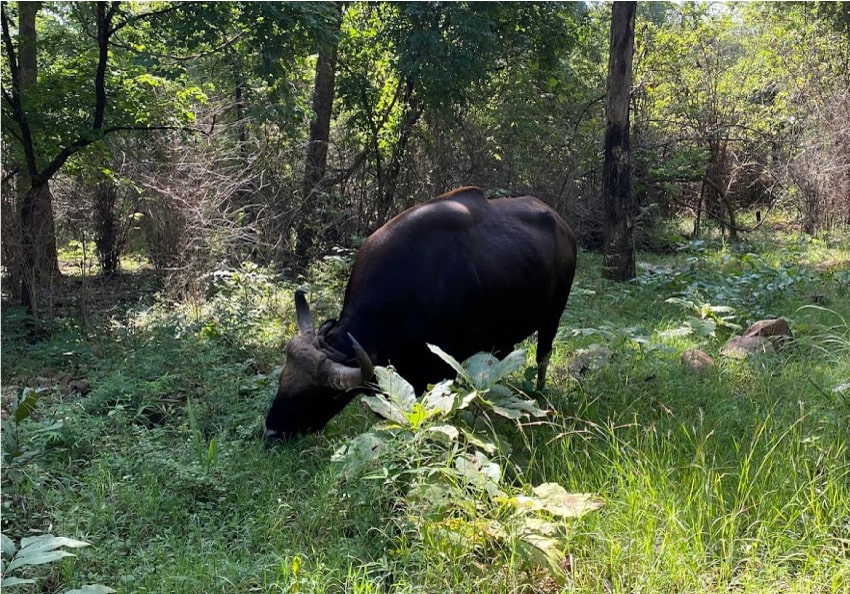
![]() An Indian bison (gaur)
An Indian bison (gaur)
2. Charting your Path
In a forest, deciding which trails to follow and how long to persist on each path is crucial. Some trails may lead nowhere, forcing you to turn back and try another route, and sometimes you might need to revisit the same trail but on a different day. In synthesis, you might explore a thematic thread that initially seems promising but ultimately doesn’t lead to actionable insights. It’s important to recognize when to redirect and adapt to be able to make progress without getting lost in the data.
3.Having a Guide
On safari, a skilled guide is indispensable. They know the terrain intimately, can distinguish subtle signs of wildlife, and point you in directions that are more likely to yield fruitful outcomes. In research, guides come in the form of local collaborators, fixers, researchers, and subject-matter experts. For our study, local researchers were invaluable to involve in our synthesis sessions—they clarified cultural and linguistic nuances, helped contextualize findings, and pointed out connections we might not have noticed. Just as a guide enhances your safari experience, involving those with deep contextual knowledge is essential to the synthesis process.
4. Bringing Others on the Ride
The more people in your safari jeep, the more eyes scanning the forest. One person might spot a bird, another an interesting-looking plant, and someone else some claw marks on a tree. Each perspective adds to and enriches the collective experience. During synthesis, involving a diverse group of researchers to review and debate the data ensures that multiple viewpoints are considered, revealing insights that a solo job would not have done. Collaboration in qualitative synthesis brings rigor and depth, enhancing the reliability of the research.
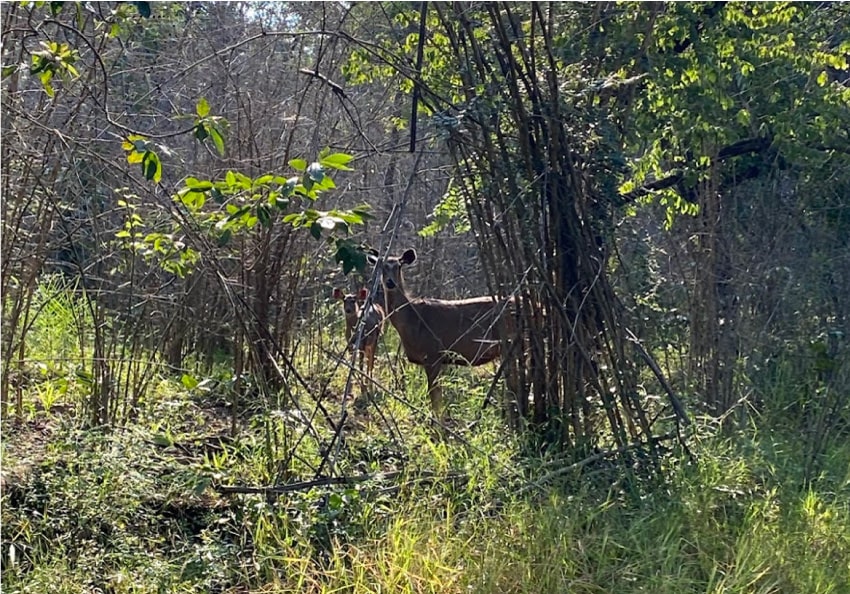
![]() Two Sambar Deer
Two Sambar Deer
5. Sharpening your Eyes
On your first couple of rides in the forest, you might feel like an amateur when spotting wildlife - every shadow or shape in the distance can initially appear to be a deer, a buffalo, or even a tiger, when it ends up being just a rock. Over time, you learn to recognize these shapes better for what they really are. You’ll also learn to discern subtle signs: a paw print (or pugmark, as they call it in India), the rustle of leaves, or the faintest sound of movement. In synthesis, the same practice applies. The more you sift through qualitative data, the sharper your instincts become for identifying what’s significant versus what’s peripheral.
6. Learning to See the Forest for the Trees
Initially, you might see each sighting as an isolated moment in the forest. But as you spend more time observing, patterns emerge—how trails connect, how animals move within their habitat, and how the ecosystem functions as a whole. In synthesis, insights often come not from isolated data points but from understanding how they interconnect. Seeing the bigger picture can reveal trends and themes that shape the trajectory of the research.
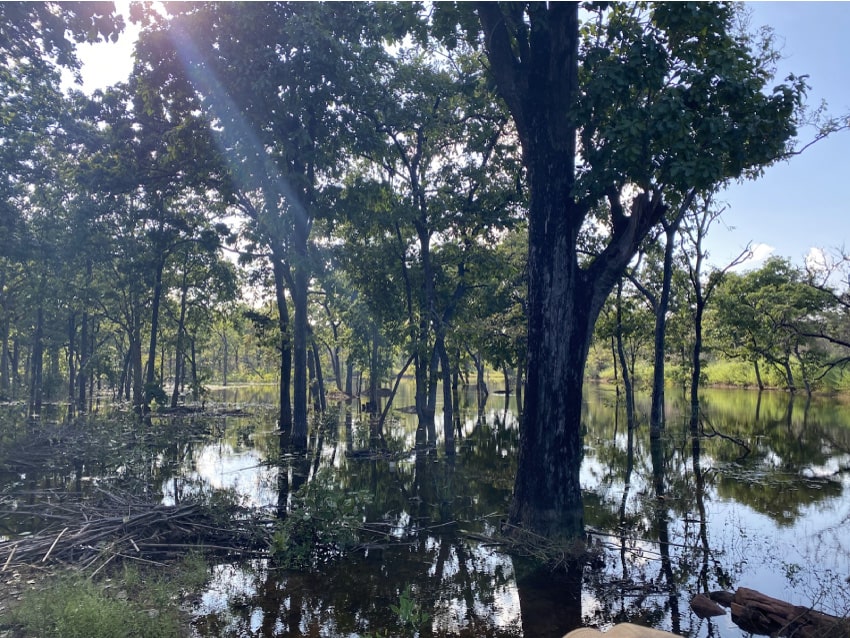
A serene part of the national park with a body of water
Approaching synthesis as an adventure invites us to embrace the uncertainty and curiosity that come with it. Every footprint in the data, every faint rustle of a pattern, has the potential to lead to something meaningful. And while not every trail will lead you to a tiger, every journey enriches your perspective, preparing you for the next expedition. So the next time you find yourself knee-deep in data, remember: it’s not just about finding answers. It’s about how you navigate the forest, who you take along for the ride, and what you discover along the way. With the right mindset, even the most complex synthesis process can feel (almost!) as thrilling as a safari.
Use of AI:
I used ChatGPT to refine sentence structure, enhance the flow of ideas in certain paragraphs, and generate suggestions for title headings, though the overall structure and ideas are my own.
